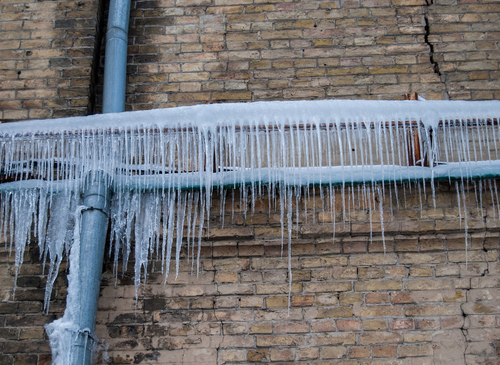Ways to Prevent Frozen Pipes in Winter: Professional Advice
Ways to Prevent Frozen Pipes in Winter: Professional Advice
Blog Article
Every person will have his or her own assumption in relation to How to Prevent Your Pipes From Freezing.

Winter can damage your pipes, specifically by freezing pipes. Right here's just how to prevent it from taking place and what to do if it does.
Introduction
As temperatures decrease, the threat of icy pipes boosts, possibly bring about pricey repair work and water damages. Understanding exactly how to prevent icy pipelines is important for home owners in chilly environments.
Recognizing Icy Pipelines
What triggers pipelines to ice up?
Pipes freeze when revealed to temperatures below 32 ° F (0 ° C) for prolonged periods. As water inside the pipes ices up, it broadens, putting pressure on the pipe walls and possibly causing them to rupture.
Threats and problems
Frozen pipelines can bring about supply of water disruptions, home damages, and costly repair work. Ruptured pipelines can flooding homes and cause substantial architectural damages.
Indications of Frozen Pipes
Recognizing icy pipes early can stop them from rupturing.
Exactly how to determine frozen pipelines
Look for lowered water circulation from taps, uncommon smells or noises from pipes, and visible frost on subjected pipelines.
Prevention Tips
Shielding vulnerable pipes
Cover pipes in insulation sleeves or utilize warmth tape to secure them from freezing temperature levels. Concentrate on pipes in unheated or exterior areas of the home.
Home heating techniques
Maintain indoor spaces effectively heated up, particularly areas with pipes. Open cabinet doors to allow cozy air to distribute around pipes under sinks.
Safeguarding Outside Plumbing
Yard pipes and exterior taps
Detach and drain garden pipes prior to wintertime. Install frost-proof spigots or cover exterior faucets with shielded caps.
What to Do If Your Pipelines Freeze
Immediate actions to take
If you presume icy pipes, keep faucets available to ease stress as the ice melts. Utilize a hairdryer or towels taken in warm water to thaw pipes gradually.
Long-Term Solutions
Structural modifications
Take into consideration rerouting pipes away from exterior walls or unheated areas. Include added insulation to attic rooms, cellars, and crawl spaces.
Updating insulation
Purchase high-quality insulation for pipelines, attic rooms, and wall surfaces. Proper insulation assists maintain regular temperatures and decreases the threat of icy pipes.
Conclusion
Preventing icy pipes requires positive procedures and fast responses. By comprehending the causes, signs, and safety nets, property owners can protect their plumbing during winter.
5 Ways to Prevent Frozen Pipes
Drain Outdoor Faucets and Disconnect Hoses
First, close the shut-off valve that controls the flow of water in the pipe to your outdoor faucet. Then, head outside to disconnect and drain your hose and open the outdoor faucet to allow the water to completely drain out of the line. Turn off the faucet when done. Finally, head back to the shut-off valve and drain the remaining water inside the pipe into a bucket or container. Additionally, if you have a home irrigation system, you should consider hiring an expert to clear the system of water each year.
Insulate Pipes
One of the best and most cost-effective methods for preventing frozen water pipes is to wrap your pipes with insulation. This is especially important for areas in your home that aren’t exposed to heat, such as an attic. We suggest using foam sleeves, which can typically be found at your local hardware store.
Keep Heat Running at 65
Your pipes are located inside your walls, and the temperature there is much colder than the rest of the house. To prevent your pipes from freezing, The Insurance Information Institute suggests that you keep your home heated to at least 65 degrees, even when traveling. You may want to invest in smart devices that can keep an eye on the temperature in your home while you’re away.
Leave Water Dripping
Moving water — even a small trickle — can prevent ice from forming inside your pipes. When freezing temps are imminent, start a drip of water from all faucets that serve exposed pipes. Leaving a few faucets running will also help relieve pressure inside the pipes and help prevent a rupture if the water inside freezes.
Open Cupboard Doors
Warm your kitchen and bathroom pipes by opening cupboards and vanities. You should also leave your interior doors ajar to help warm air circulate evenly throughout your home.

Do you like reading about How to Prevent Your Pipes From Freezing? Try leaving a remark down below. We will be delighted to hear your responses about this page. In hopes to see you back again before long. You should take the opportunity to promote this entry if you enjoyed reading it. I praise you for your time. Kindly come by our blog back soon.
Schedule Service Report this page